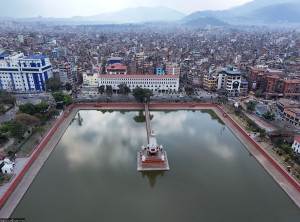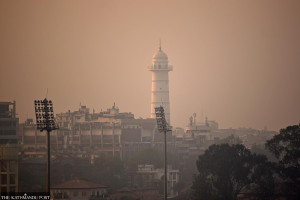Opinion
Animal citizens of Kathmandu
When first arriving in Kathmandu, the most visually striking element was, to me, the dogs.
Jake Storey
When first arriving in Kathmandu, the most visually striking element was, to me, the dogs. The very image of dogs just wandering the streets en masse would be singularly bizarre in Canada. Generally speaking, we’re ot comfortable with anything larger than a raccoon running free in our streets and even then, the raccoons are only vaguely tolerated. If the dogs seemed odd, the cows and monkeys were certainly a bigger shock.
Sharing space
A single dog loose in Canada would be a curious enough sight that an average person would likely pick up the dog, attempt to find its owner and failing that, take it to an animal shelter. A loose dog is immediately considered to be a lost pet that must be returned to its family. A cow wandering the streets would be reason enough to call animal control and have the cow taken somewhere safe.
But the animals of Kathmandu are fascinating in that they never seem to be out of place. The stray dogs and cows are like any other citizen. They have their neighbourhoods and they walk up and down the streets like anyone else on their way to work or school. People stop their cars for them and drive around them, just as they would for any other member of the community. This kind of symbiosis is what draws my attention to the animals of Kathmandu. They survive largely on the generosity and carelessness of humans, eating their hand-outs and scraps.
No different
Dogs have a long history of interpersonal relationships with humanity. Many of their physical and personality traits were developed as a means to directly benefit from interacting with us. Kathmandu’s street dogs are not unlike most household dogs I know back in Canada. I would venture to say that many of them are even better behaved than some of the spoiled canines I’ve met. Obviously some have been stand-offish or aggressive, but the vast majority have been polite and friendly. A few dogs I even consider my friends, and they occasionally accompany me on walks.
So the dogs that roam the streets of Kathmandu make perfect sense. Dogs have been an interconnected part of human culture and society since before recorded history. But the cows are certainly unique. The respect the cows command is impressive. They walk the streets and humans step aside or stop their vehicles in deference to the cows. This is of course due to the sacred nature of cows in Hinduism and the fact that they are Nepal’s national animal. But in the West, no animal, not even our national animal, the beaver, would be deemed worthy of half that level of respect. In Canada, the generally accepted response to an animal stepping into the street is to try and avoid it if possible, but if doing so would pose the remotest threat to the humans around you, you are supposed to just run it over. But Kathmandu’s animal citizens, the dogs and the cows, are not treated any different than people in that regard.
Now I move on to the monkeys. The monkeys are not as prominent as the other animals, generally localised to a few specific areas of the city. Their relationship with humans is perhaps the most detrimental. Their habitat is filled with the wrappers from snacks and candy, and the negative effects that these foods are having on the health of these monkeys have been previously documented. I was also warned before coming here to be wary of the monkeys, as they can be aggressive and if they bite you, they could possibly give you a disease. The thing that strikes me the most is that such a state of affairs would never be tolerated in Canada. Swarms of aggressive, disease carrying animals in the middle of a major city centre? That would not be condoned in Canada. If a wandering cow is considered dangerous, you can only imagine how we might respond to monkeys roaming loose. But the Nepali people seem to handle this situation in stride, unfettered by the presence of animals that would, in western society, be considered a dangerous and unpredictable element. The success of this symbiotic relationship between so many different species has resulted in an urban ecosystem unlike anything you’d find in Canada.
Storey is a Canadian journalist working with Internship Nepal




 25.6°C Kathmandu
25.6°C Kathmandu










